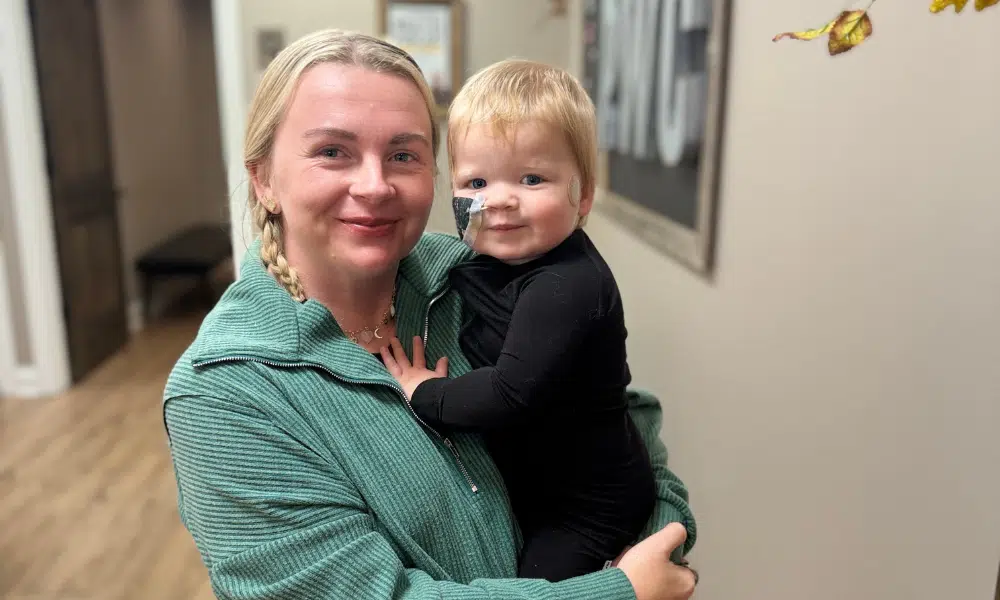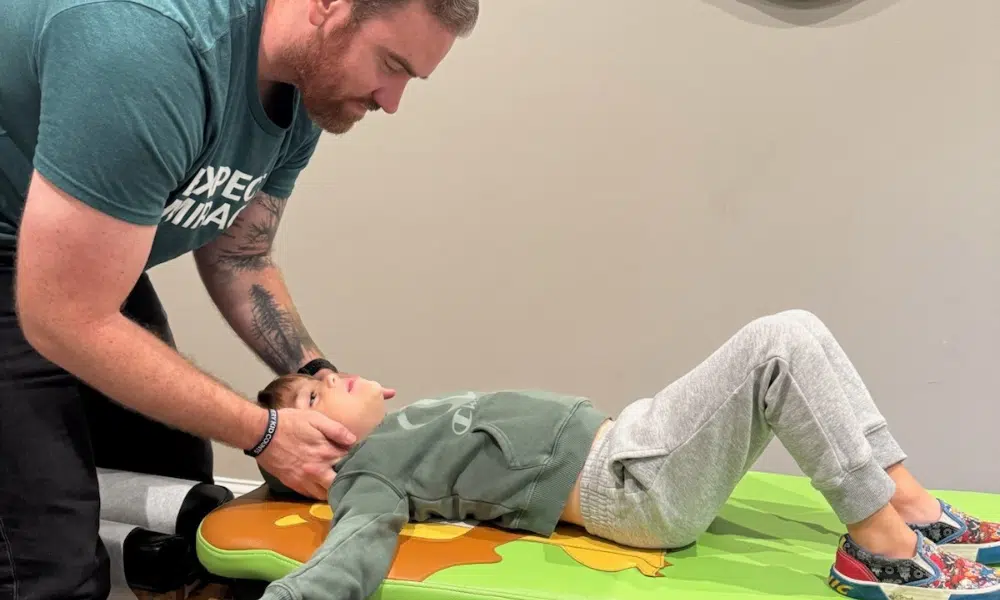Research shows that many parents experience regret about medical decisions made under pressure—decisions that could have been avoided with the right advocacy framework.
Picture this: You’re in a sterile hospital room while your child lies on an examination table. The doctor is explaining a procedure using terms you barely understand, with urgency in their voice – “We need to act quickly” or “This is standard protocol.” Your heart races, questions spin, but the words won’t come. You feel the weight of a decision that could impact your child’s future, yet you’re expected to decide right now.
Unfortunately, the same thing happens again and again in emergency and urgent care treatment rooms, and even on standard “wellness” checkups at the conventional pediatrician. You often find yourself sitting in the exam room after a long wait, full of questions and concerns. But instead of feeling heard and cared for, the doctor seems rushed – almost bothered by your questions – rather than taking the time to explain things clearly and with empathy.
What you want to do as a parent in those moments is have the time to gather the information you need to make an informed decision, talk it through with your spouse and perhaps other care providers on your child’s team, and move forward only when you’re ready. But so often, there are mounting pressures coming from all angles in the medical system, and countless parents just end up saying “go ahead” and agreeing to a procedure, examination, treatment, or intervention that, if given more time to properly research and understand, they likely would not have.
If you’re a parent of a child with chronic health challenges – ADHD, autism, sensory processing disorder, anxiety, or other neurological conditions – these moments become even more intense. Your child’s nervous system is already sensitive and dysregulated. The medical environment can send both you and your child into fight-or-flight mode, yet these are precisely the moments when clear thinking and confident advocacy matter most.
The 5-Step Advocacy Framework we’re sharing transforms overwhelming moments into opportunities for informed, confident decision-making. These aren’t just communication techniques – they’re neurologically-informed strategies that protect your child’s health while navigating a system that often doesn’t understand the complexities of dysautonomia, subluxation, and nervous system dysfunction.
Why Your Child Needs a Different Approach
The medical system excels at crisis and emergency intervention, but struggles mightily with tackling chronic illness and truly understanding proactive health and wellness. Here’s the reality:
Your child with ADHD, autism, or chronic conditions doesn’t respond to medications like neurotypical children. Their nervous system operates in a state of dysregulation, making them more sensitive to pharmaceutical interventions and environmental stressors.
Or maybe your child already struggles with chronic autoimmune challenges like allergies, asthma, food intolerances, or PANS/PANDAS, so the last thing you want to give them is another round of antibiotics or steroid-based medications and further weaken their already compromised immune system. The high-pressure, almost “sales-based” environment that is a lot of the conventional medical world is one of the main reasons the overuse of antibiotics has become such a massive chronic disease and public health problem.
Medical environments trigger dysfunction. The fluorescent lights, beeping machines, and rushed energy trigger your child’s already dysregulated nervous system, making accurate assessment nearly impossible.
Communication breaks down. In a 15-minute appointment that likely had to be scheduled months ago and was preceded by a 2-hour wait before you could even see the doctor, there’s no time to understand your child’s complex neurological history, birth trauma, sensory triggers, gut and immune health, or the patterns you’ve observed over months of living with your child 24/7.
You and your child deserve a doctor who’s going to truly take the time to listen and understand your child’s entire case history, full spectrum of challenges, answer your questions, and explain things in a way that makes sense to you. When you truly do find doctors who listen, it can make all the difference in both the health outcomes of your child and the confidence you have in parenting.

The 5-Step Advocacy Framework: Your Roadmap to Confident Medical Decisions
Step 1: Slow Down the Decision
The most powerful phrase in medical advocacy: “I need a moment to think about this before making a decision.”
Medical environments create artificial time pressure. Unless you’re facing a genuine life-threatening emergency – and most situations aren’t – you have time to process and think. When you slow down the decision-making process, you’re allowing your parasympathetic nervous system to engage, enabling you to think clearly. For your child, reducing the rushed energy helps their dysregulated nervous system settle for a more accurate assessment.
Step 2: Ask for Full Explanation – Risks, Benefits, Alternatives
Never consent without understanding the complete picture. Your three essential questions:
- “What are the risks of this procedure or medication?”
- “What are the benefits we’re hoping to achieve?”
- “Are there any alternatives – including observation, less invasive, drug-free options?”
Children with dysautonomia, sensory processing challenges, and long-standing neuroimmune dysregulation often react differently to medications than neurotypical children. Pay attention to how providers respond to your questions. Good doctors welcome thorough questioning. Defensiveness or pressure to “just trust” their recommendations reveals whether this provider understands your child’s unique complexity.
Step 3: Get Clarity on Urgency & Next Best Steps
Again, in many instances, time pressure is often artificial. Ask these clarifying questions:
- “Is this urgent or life-threatening right now?”
- “What happens if we wait, observe, or try a different approach first?”
- “What would you recommend if this were your child?”
Many neurological conditions benefit from observation periods that allow the nervous system to reveal patterns over time. Rushing into interventions can mask underlying dysfunction or create additional stress that worsens dysautonomia and chronic health challenges.
Step 4: Trust Your Gut + Seek a Second Opinion if Needed
You live with your child 24/7. You know their patterns, triggers, and warning signs better than any provider. When something doesn’t feel right, trust that instinct.
Use these empowering phrases:
- “This doesn’t sit well with me – I want to get a second opinion before proceeding.”
- “Is there another specialist we can speak with?”
Children with complex health conditions especially benefit from multiple perspectives. Conventional medical providers are likely to blame genetics and recommend medications to cover up the symptoms. Functional health providers are likely to recommend stool tests and other labs, and recommend a myriad of diet changes, detoxes, supplements, and other natural health interventions. And other types of providers may take all sorts of different viewpoints and make various recommendations.
Taking your time, trusting your gut, and consulting with multiple experienced professionals will go a long way to helping you make a clear, confident decision.
Even within the chiropractic and nervous system focused field, there can be multiple unique approaches. There is a vast difference between standard spinal-focused chiropractors, Neurologically-Focused Pediatric + Family Chiropractors, and functional neurology focused chiropractors. The latter two especially can look and sound quite similar, but are vastly different in their clinical approach and outcomes. To learn more about the different types of chiropractic care and which one may be best for your family, check out this article.
Step 5: Keep Records & Make Notes
Keeping a notebook, folder, or running Google Document/Sheet where you can keep track of your child’s progress, all their providers and care recommendations, results, etc., is always a good idea. You can keep track of things like:
- Names of all providers and staff
- Specific recommendations and reasoning
- Risks and benefits discussed
- Your questions and their responses
- Timelines and other information
For children with ongoing chronic health and neurological challenges, these records become invaluable for tracking patterns, sorting out what’s working and what’s not, and honestly just keeping your parent brain as sane and systemized as possible.
Bonus Step 6: Have an Advocate Present
Bring a spouse, family member, friend, or someone else you trust. Two minds process complex medical information better than one. Your advocate can ask questions you might forget, take notes while you focus on your child, and provide emotional support during overwhelming moments.
Having an advocate is also a really great idea when working with your child’s school and educational team (IEPs, 504s, etc.) – as many parents feel the same overwhelming and limited experience happens in that setting all too often.
Your Child’s Strongest Advocate = YOU + PX Docs
One of the things that makes our PX Docs Network quite unique is that we truly understand that no one knows your child better than YOU. Therefore, we don’t look to take control, add pressure or confusion, or anything else that would take your child’s healing journey off track.
Instead, we are entirely obsessed with intentfully and actively listening to all of your concerns, answering all of your questions in full (using language you can understand), and most importantly, partnering with you and the rest of your child’s care team to get maximum results.
We take our role very seriously, and we know that the best results don’t come from a dictatorship, but instead from that true partnership.
If you’ve been looking for a doctor who fits that description but haven’t yet found one, look no further than our PX Docs Directory.
Always Remember: you are your child’s best advocate! You know them better than any provider ever could. To do their job best, every single provider on your child’s care team needs your input, observations, and advocacy to make truly informed decisions. These tools give you the confidence and framework to use that knowledge effectively.
Your advocacy can literally change your child’s health trajectory. When you slow down decisions, ask the right questions, trust your instincts, and seek appropriate support, you can confidently move forward on a path that is sure to get the best results for your child and family!






